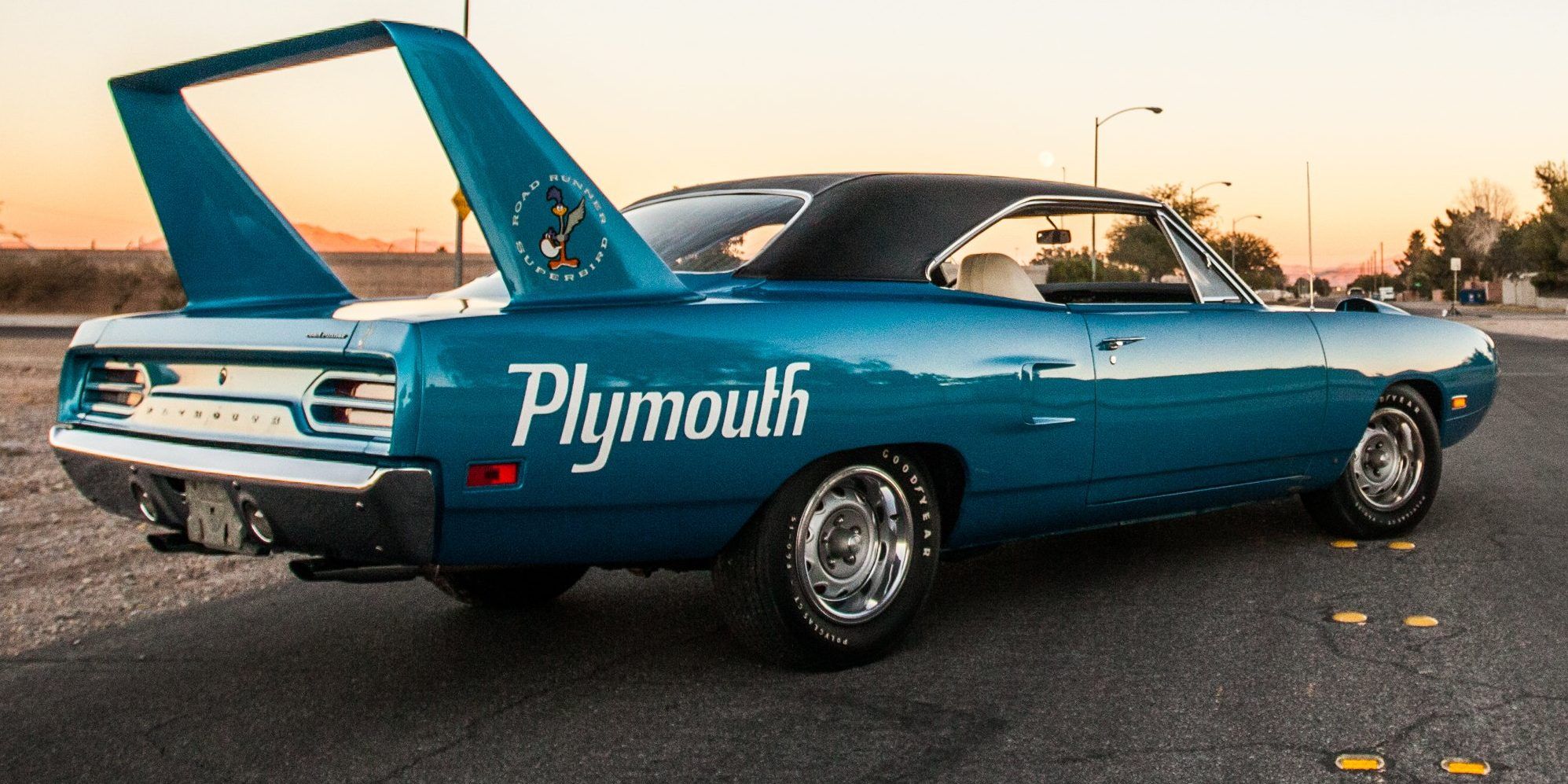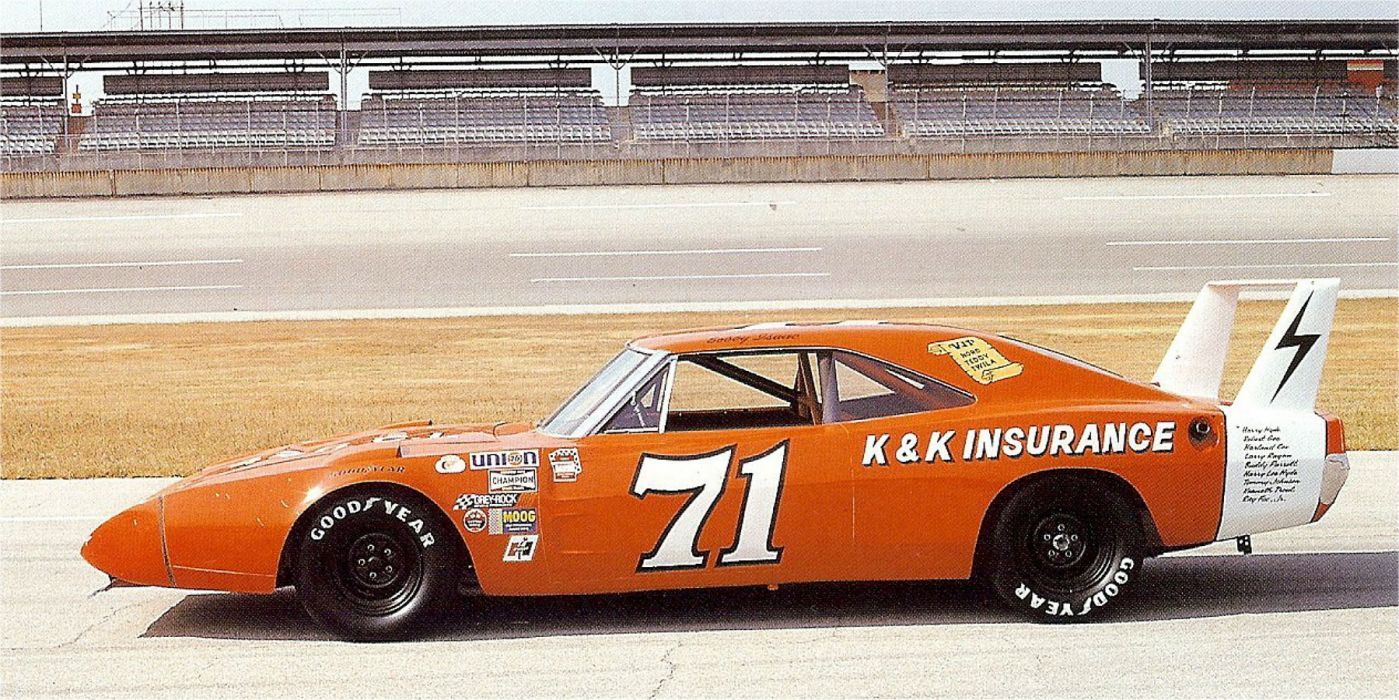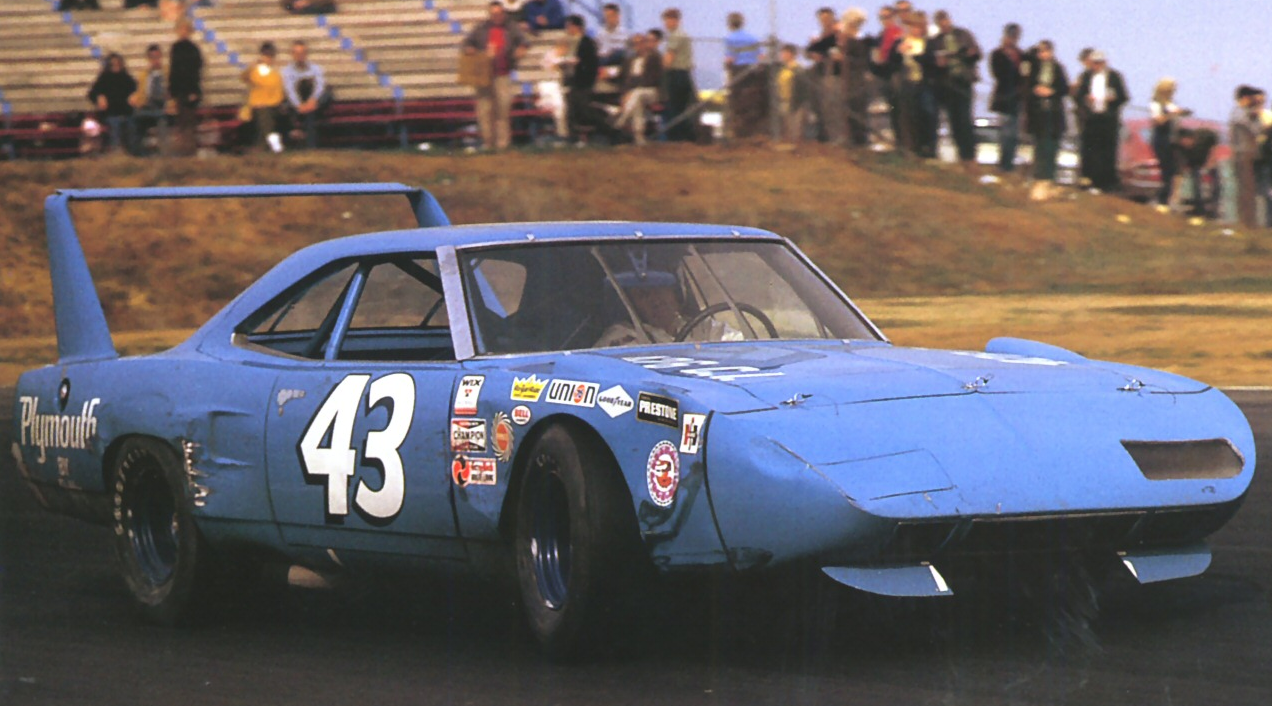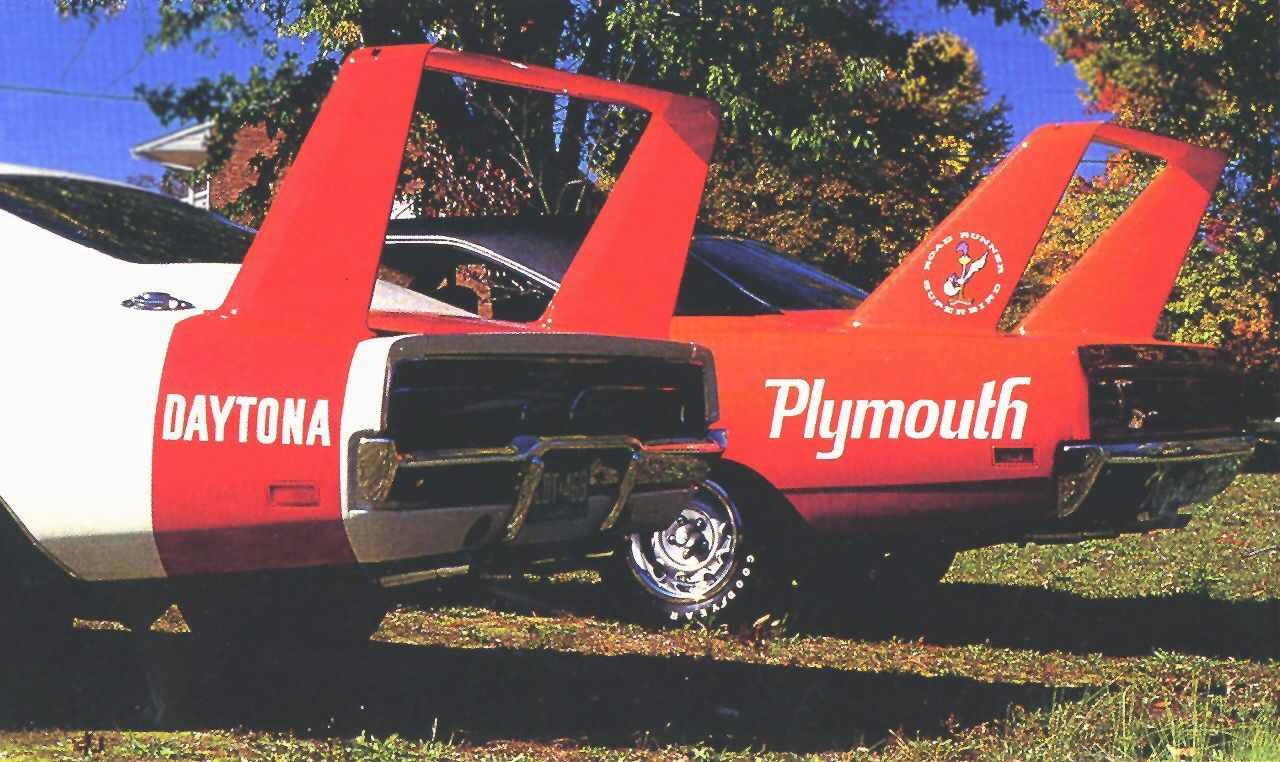Before America's hobby was buying $5000 Super Bowl tickets, they were going to the races. And in the late 1960s, you better believe that car companies were punching their hardest to become king of NASCAR mountain.
The '80s and '90s get all the credit for the cool street-legal race cars cars like the Audi S1 Quattro and Mercedes 190 E 2.5-16 Evo II, but we would argue that the 1970 Plymouth Superbird perfected the homologation special many years prior.
Motivation
The last few years of the 1960s were some of NASCAR's biggest years of the decade, and sadly for Chrysler, Ford was the fastest team in the entire racing series as they had well developed their Gran Torino stock cars from all the Le Mans sponsorship and Mustang money that was flowing in.
Chrysler started by utilizing its Dodge brand to come up with a solution. The Charger in its stock-bodied form was not what you would call aerodynamic, what with the flat nose and rear pillars shaped like flying buttresses. So, they put the Coronet's grille on the Charger, made the rear glass flush with the pillars, thus creating the Charger 500.
But once at the oval, it fell flat. Ford's team was still top dog and Chrysler was forced to resort to pure creativity - The Dodge Daytona 500. Its wedged front facia, big air ducts, and wing big enough to take shelter under was Chrysler's first step in the right direction. The new 69 Daytona went on win its first race at the historic Alabama International Motor Speedway, proving that Chrysler had it in them the whole time.
The More The Merrier
Seeing that Dodge won their first NASCAR race by basically adding body parts, Plymouth wanted some glory of their own and knew how to make it happen. Finally, we reach the 1970 Superbird. Powered by the same 426 Hemi that the Daytona used and using a very similar aero kit, they found a platform that they could improve upon.
The Daytona's nose was aerodynamic for the racetrack but problematic on the street because it trapped in the hot air that would be flowing out the back of the car if it were going 200 mph. Plymouth recognized their flaws and designed a better-looking and more practical facia for the Superbird as well as re-positioning the wing further forward.
Plymouth's design was so good in fact, that it prompted former Dodge race car driver, Richard Petty, to come back to Chrysler after leaving them for Ford a year earlier. The two Chrysler race cars had their work cut out for them and when the 1970 season came around, they absolutely commanded the racetrack, winning over 2/3 of the total races that year.
Legacy
The Superbird's success owes a lot to the Dodge Daytona, without Dodge's plan to go all out in the aero department, Plymouth would have still been racing their dull old Belvedere around. But their vision and insight to continue the project with the Road Runner based Superbird is what today's car collectors are thankful for.
Its value isn't just it's rarity speaking, it is the privilege of knowing that your car can outrun most modern cars and continue up to a blistering 200 MPH, winged glory.




